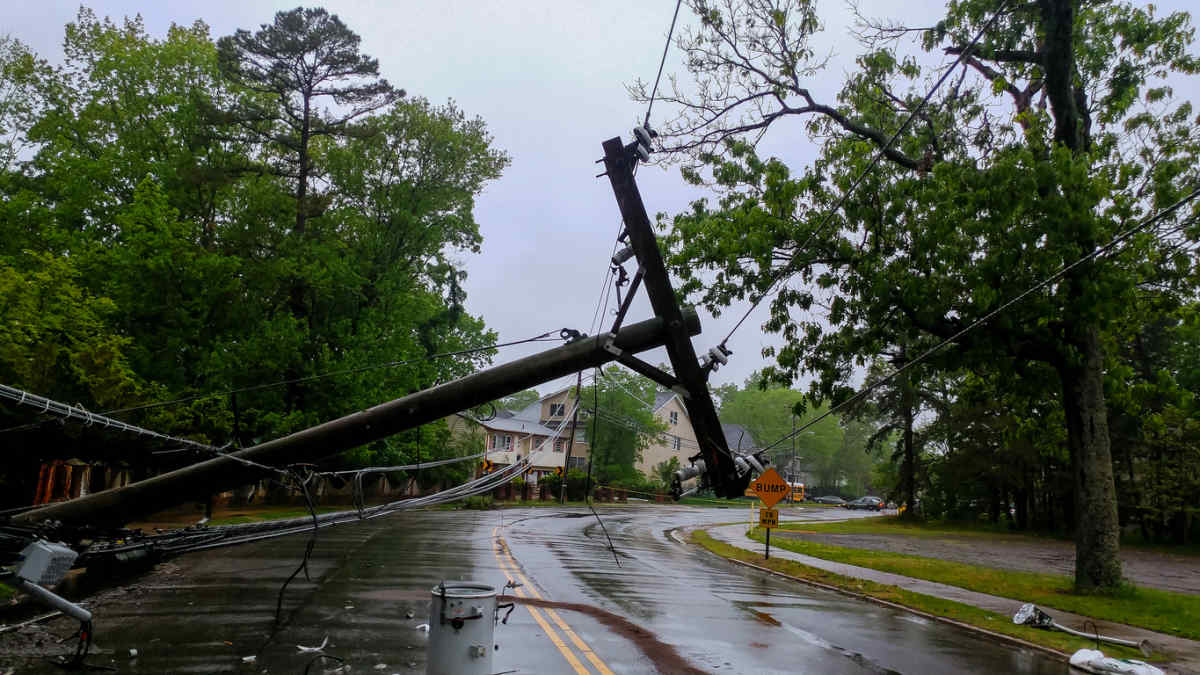

?On any given day, a blizzard, tornado, flood or other kind of disaster may bombard towns in the U.S. And on any given day, roughly one-fourth of Americans are working remotely.
Many traditional workplaces have disaster preparedness plans to cope with emergencies like these. But what about remote employees? Both the employer and employee bear some responsibility in protecting the employer’s assets and ensuring that the employee can continue to work after the disruption.
First, remote employees need to take inventory of all business and personal assets at home that would need protection in case of a disaster, said Steve Harris, co-founder and CEO of Krisis Dry Bags, which manufactures bags designed to protect belongings from floodwater damage. From a work standpoint, this may include computer equipment and important paperwork.
Second, “When preparing for a natural disaster [at] home, it is incredibly important to prepare well before a severe weather event arrives. The first step is to focus on protecting your most valuable items, both personal and work related,” Harris said.
Next, employers should find out whether their business insurance policy covers company-owned devices in remote employees’ homes. Corie Colliton, senior editor of industry research at Business.com, noted that these devices, such as laptops, usually aren’t covered by an at-home worker’s homeowners or renters insurance policy.
Furthermore, employers should make sure company data maintained by at-home workers is properly stored, Colliton said.
“Individual remote workers will need guidance on where to store digital files and other data,” she said. “Important information should not be stored locally [on their laptops] by remote employees. They must have access to remote shared servers, and you must ensure everyone is comfortable using them in advance of storms or other disasters.”
To provide that and other critical information, Harris advises employers to create a disaster preparedness manual that applies to both workplace and remote employees. The manual could include emergency procedures, emergency communication guidelines, business continuity plans and other vital details.
Experts stress that every employee should be up to speed on the latest version of the disaster preparedness manual.
“It’s important to keep staff safe, no matter where they are, and providing them with the necessary tools and resources when a crisis arises not only keeps them safe, but helps them navigate incredibly emotional and damaging times,” Harris said.
Next, Kim Brooks, vice president of operations at ServiceMaster Restore, which specializes in natural disaster response and restoration services, said at-home workers should have the proper supplies on hand. These include:
- Hand-cranked radio.
- Backup batteries.
- Flashlights.
- First-aid items, such as bandages and over-the-counter pain relievers.
- Tools such as wrenches, screwdrivers and pliers.
- Three-day supply of water (up to one gallon of water per day for each person).
- Three-day supply of nonperishable food for each person.
Steve Gaer, president of Recoop Disaster Insurance, noted that employers can help at-home workers affected by a disaster by providing temporary housing, backup power and cellphone service with mobile hotspot capabilities.
Remote workers should identify in advance a temporary place to work if their home becomes uninhabitable. Ylopo, provider of an automated marketing platform, posted a blog with tips on how to do so: “Make a list of friends or relatives who live in a nearby town where you can work temporarily, especially if they’re in an area not heavily affected by the calamity. Contact them ahead of time to see if they can accommodate you.”
Colliton pointed out that employers should assure all of their workers that their safety is the top concern during a disaster, “more than their productivity or profits.” In line with that, employers should be aware of where all of their remote workers live and make sure their contact information is up-to-date.
“If any live in disaster-prone locations, employers should create contingency plans well in advance of weather events so their employees can focus on personal safety in case disaster strikes,” she said.
To help determine which types of natural disasters might hit places where remote workers live, check out the National Weather Service’s awareness and preparedness calendar. And because flooding is the country’s most common and costly type of natural disaster, consider using the weather service’s flood-tracking map to monitor conditions where remote workers are.
However you approach disaster preparedness for at-home workers, Harris underscores the importance of developing emergency preparedness plans before disaster strikes.
“So many people believe that these disasters could never happen to them, and when it unfortunately does, they experience an overwhelmingly amount of emotional and physical loss,” Harris said.
John Egan is a freelance writer based in Austin, Texas.
